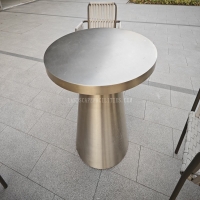Welcome to the website for landscape facilities products and knowledge.
What are the most common design features that discourage improper waste disposal?
Improper waste disposal is a global challenge, but thoughtful design can significantly reduce littering and encourage responsible waste management. Here are some of the most effective design features that discourage improper waste disposal:
1. Strategic Bin Placement – Positioning bins in high-traffic areas, such as near exits, walkways, and public seating, ensures convenience and reduces the temptation to litter.
2. Clear and Color-Coded Labeling – Using distinct colors and symbols for different waste types (e.g., blue for recycling, green for compost) helps users dispose of waste correctly without confusion.
3. Smart Sensor Bins – Motion-activated or touchless bins minimize physical contact, improving hygiene and encouraging use, especially in public spaces.
4. Anti-Littering Signage – Eye-catching signs with simple messages (e.g., "Keep It Clean") and visuals reinforce responsible behavior and deter improper disposal.
5. Locking Lids and Narrow Openings – Bins with restricted openings prevent large or improperly sorted items from being discarded, while locking lids reduce scavenging and overflow.
6. Aesthetically Pleasing Designs – Attractive, well-maintained bins blend into urban environments, making people more likely to use them instead of littering.
7. Public Education Integration – Some bins include QR codes or infographics that educate users on proper waste sorting and environmental impact.
By incorporating these design elements, cities and businesses can foster better waste disposal habits, reducing pollution and promoting sustainability. Small changes in design can lead to big improvements in community cleanliness.
Related search:

Recommendation
Outdoor Metal Table - Classic Outdoor Furniture, Stainless Steel Table, Durable and Reliable